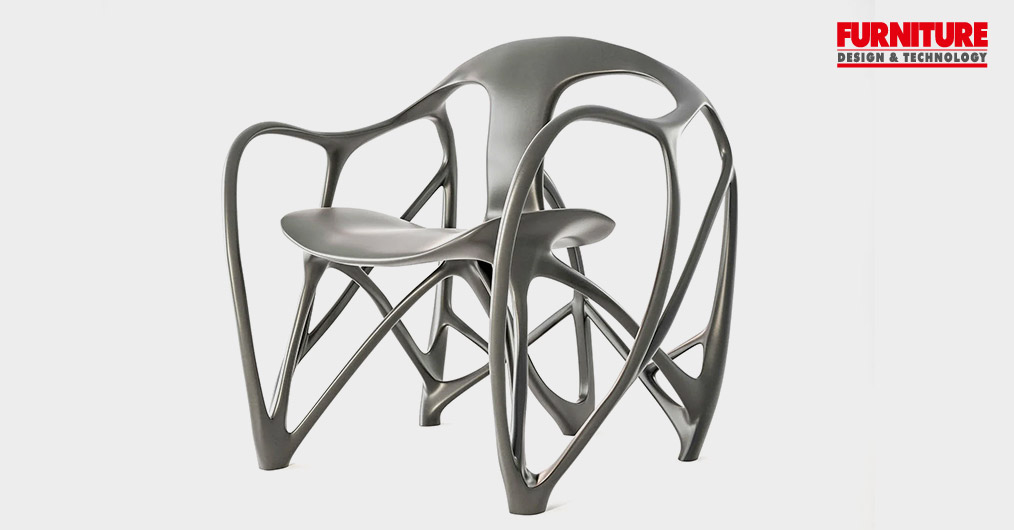
Celebrated for its unparalleled convenience and versatility, plastic has also faced significant criticism for its environmental impact. The true ecological footprint of plastic, however, largely depends on how it is managed post-production. Efficient recycling can significantly reduce its environmental harm. Embracing sustainable design by minimizing plastic use while achieving robust and elegant structures is a promising path toward eco-friendly innovation. Inspired by this philosophy, Siqi Yang designed the Spidique chair, leveraging advanced simulations to ensure both structural integrity and aesthetic appeal. Know more about it on FURNITURE DESIGN AND TECHNOLOGY (FDT).
The design of Spidique draws inspiration from renowned designers Ross Lovegrove and Luigi Colani. Lovegrove is famous for his use of cutting-edge technology to create futuristic and organic forms, a trait evident in Spidique’s mesh-like structure reminiscent of Lovegrove’s Formula 1 metal perfume bottle. Colani’s expertise in round, organic shapes is reflected in the chair’s fluid lines. These influences merge to create a design that marries the mechanical precision of modern technology with the artistic touch of seasoned craftsmanship.
Spidique’s manufacturing process relies on 3D printing technology, utilizing Ameba software and the Bidirectional Evolutionary Structural Optimization (BESO) algorithm. This algorithm is crucial for topological optimization, ensuring the chair is both structurally sound and material-efficient. The design process involves several stages. It begins with executing the algorithm, setting parameters to generate the chair’s initial shape. This is followed by an evaluation and refinement stage, where designers assess the initial model for ergonomic and aesthetic qualities, making necessary adjustments to enhance comfort and visual appeal. Next, the refined model is prototyped using 3D printing technology and undergoes rigorous testing for comfort, durability, and user feedback. Based on this feedback, further refinements are made to ensure the design is optimal for production.
This iterative process continues until the design achieves the desired balance of comfort, aesthetics and sustainability. This method highlights the interaction between computational precision and human-centric design. While the algorithm provides a precise and optimized structure, the human touch ensures the design meets ergonomic and aesthetic standards. Siqi Yang’s research emphasizes the potential of 3D printing technology in furniture manufacturing to drive innovation and enhance sustainability. A comparative analysis contrasting traditional furniture production with 3D-printed methods involved surveys of 20 furniture designers and 100 consumers. Multiple prototypes were created using CAD software and 3D printers. Findings revealed that 3D printing could reduce material waste by approximately 25 per cent and shorten production time by about 30 per cent, underscoring its potential for significant environmental and commercial benefits.
Image credit: Siqi Yang
Furniture Design India and the magazine FURNITURE DESIGN & TECHNOLOGY (FDT magazine) are from the trusted 22-year-old media house of SURFACES REPORTER and PLY REPORTER.
FDT is a B2B monthly bilingual magazine from India that shares the pulse of the furniture business in India and connects the manufacturers, OEMS, product designers, architects, showrooms, designers and dealers.
Read More© 2026 Furniture Design and Technologies.. All Rights Reserved. Developed by eyeQ Advertising